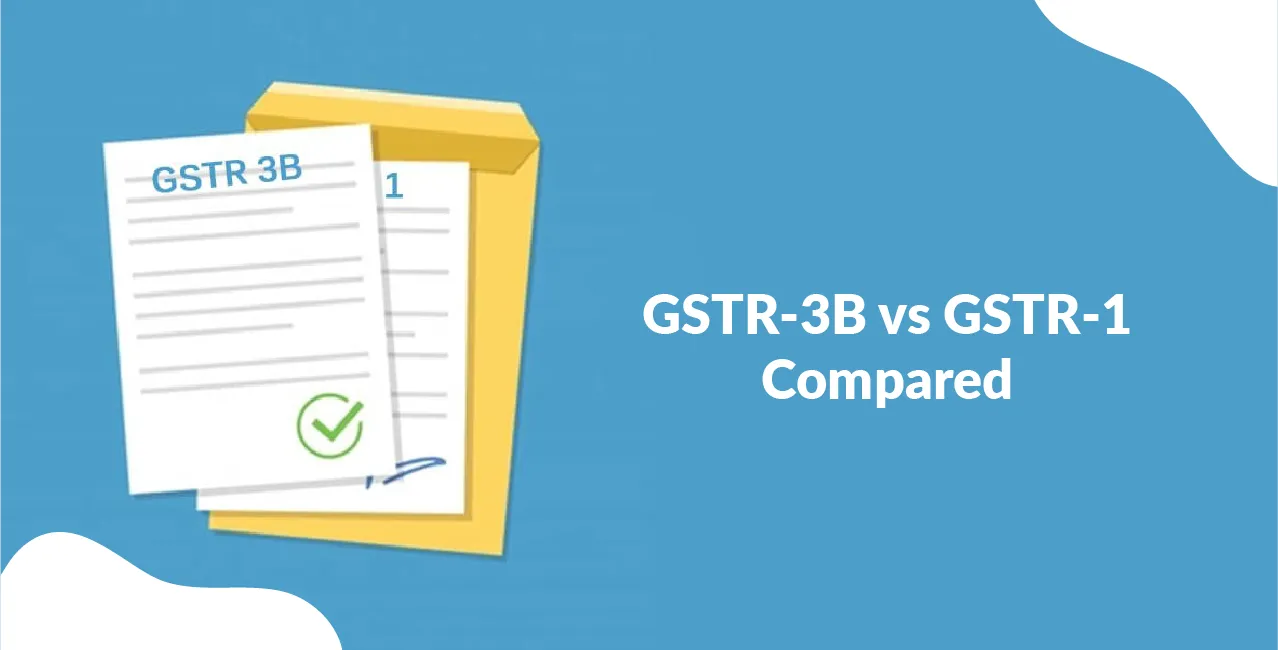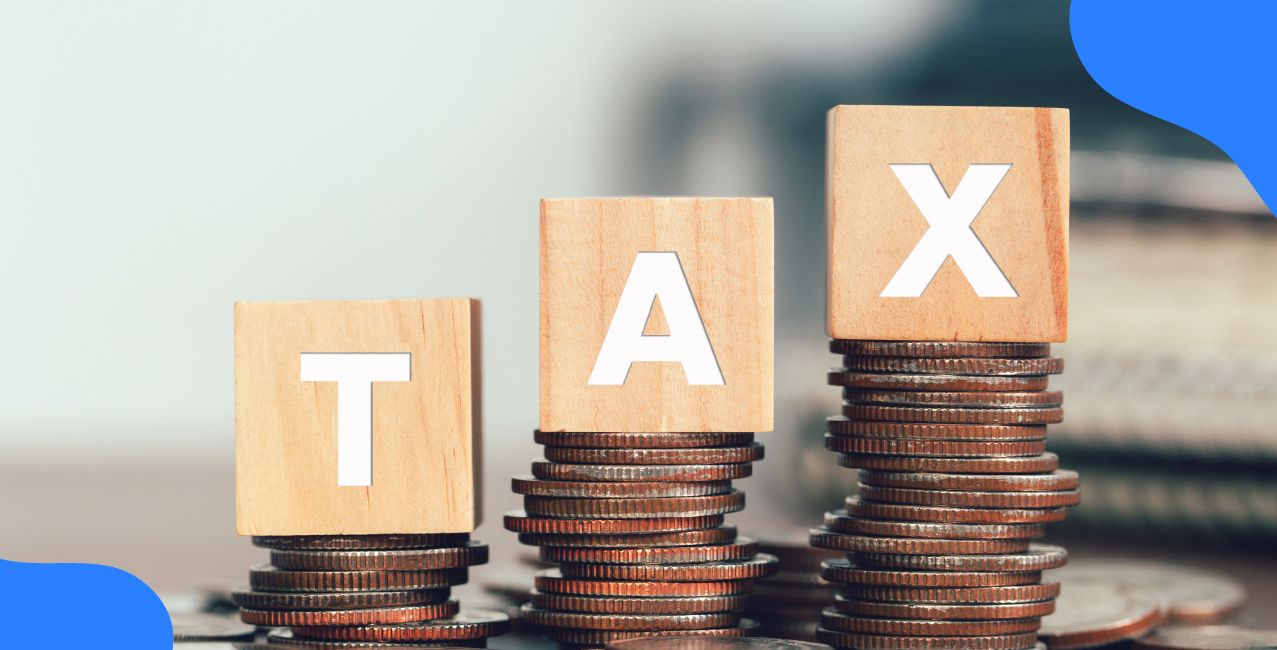
Author
LoansJagat Team
Read Time
6 Min
01 Jul 2025
GSTR-3B vs GSTR-1 Compared: Reconciliation, Usage & Reporting Importance
For Example, Rina, the owner of a boutique called Fash-Bags in Pune, made impressive sales in May 2025 — ₹2,30,000 to B2B clients and ₹90,000 to B2C customers, all with 18% GST. While she filed invoice-level details correctly in GSTR-1, she mistakenly underreported in GSTR-3B, leading to a ₹1,00,000 mismatch and ₹18,000 GST shortfall.
This small error almost cost her a penalty. To avoid such issues, it’s vital to understand the differences between GSTR-1 and GSTR-3B. This blog explains their usage, importance, and how to reconcile them accurately.
What are GSTR-1 and GSTR-3B?
A GSTR-1 is a statement of total outward supplies, which are submitted on a monthly or quarterly basis. The filing incorporates the details of both the retailers and buyers, who have registered with their GST numbers.
GSTR-1 consists of B2B Invoices, B2C (Large Invoices), Exports, Notes, and GST-exempted sales.
Example: A retailer can have a GSTIN as 01ABCDEF65412YU66
The GSTR-3B is an overall of summary of the total outward supplies, which also includes the total taxation, of the goods and services. It is the self-declared summary from the retailer who needs to furnish the complete details of his or her total sales
GSTR-3B consists of total outward supplies, inward supplies, and payment of tax.
Illustration
It is essential to furnish all the details related to total sales and taxation. Any mismatched numerical figures or discrepancies in the details related to the retailers can incur penalties.
Let’s take Fash-Bags’ filing of GSTR-1 and GSTR-3B as an example:
Also Read – GSTR 2 Overview
Total Sale to B2B Invoices: ₹ 2,30,000 GST 18% ₹ 20,700
Total Sale to consumers (B2C): ₹ 90,000 GST 18% ₹ 16,200
GSTR-1 Reporting
GSTR-3B Reporting
Key Differences Between GSTR-1 and GSTR-3B
GSTR-1and GSTR-3B Reconciliation
Example:
Let’s take the retailer Bags-World filing of GSTR-1 and GSTR-3B as an example.
The total outward taxable sale is ₹ 5,20,000, whereas the total 18% GST value is ₹ 93,600. Now, the retailer can furnish these details in the online portal. In some exceptional cases, it may end up mismatching.
Read More - GSTR-1 Filing Guide
Now, take a look at this table:
GSTR-1 Reporting
GSTR-3B Reporting
Here, the difference in taxable amount is ₹ 1,00,000, whereas the difference in GST amount is ₹ 18,000. These discrepancies need to be addressed by its retailers. However, the following reasons can be considered legitimate for these mismatched details.
- Incorrect reporting in GSTR-1 and GSTR-3 B.
- Improper arrangement of B2B and B2C bills.
- Typical careless mistakes.
These discrepancies can be rectified if the retailer pays an additional amount of ₹ 18,000 as a tax under the category DRC-03 (Voluntary Tax Payment). Later, the retailer needs to amend these changes in the subsequent days.
Why Should It Be Reported?
It is essential to report the discrepancies and mismatched details of GSTR-1 and GSTR-3B to the GST authorities. Failing to adhere to this, the retailer can face the following consequences:
- Notice from GST Staff Authorities: The retailer can receive notice from the GST authorities, demanding a legitimate explanation for discrepancies.
- Rejection of ITC Claim: Such wrong and mismatched details on GSTR filing can lead to rejection of the ITC claim, and its approval
- Penalties: The GST authority may impose a fine on the retailer.
Example:
The authorities can implement a late fee of ₹ 50 (₹ 25 CGST + ₹ 25 SGST).
The retailer is also subject to receiving a penalty fee of up to ₹ 10,000.
Conclusion
The difference between GSTR-1 and GSTR-3B is more or less the same, but with distinctive purposes and nature of filing. The one who engages in filing the total outward sales should calculate the tax amount of GST properly. Lastly, the taxpayer needs to furnish the required details of the sold goods and its GST in the respective filing.
FAQs
1. Are both GSTR-1 and GSTR-3B same?
No, both appear to be the same, but the calculations made on the total outward sales with GST differ from each other.
2. Is it mandatory to file GSTR-1?
All the registered retailers of GST need to file the GSTR-1.
3. What happens if wrong details are furnished?
The retailer needs to inform the GST authorities and should rectify it in the subsequent days.
4. What is the abbreviation of GSTIN?
It is a Goods and Services Tax Identification Number.
5. Can I allot my GSTIN number?
No, only the GST portal will allot a GSTIN number.
Other Important GST Pages | |||
About the Author

LoansJagat Team
‘Simplify Finance for Everyone.’ This is the common goal of our team, as we try to explain any topic with relatable examples. From personal to business finance, managing EMIs to becoming debt-free, we do extensive research on each and every parameter, so you don’t have to. Scroll up and have a look at what 15+ years of experience in the BFSI sector looks like.

Quick Apply Loan
Subscribe Now


